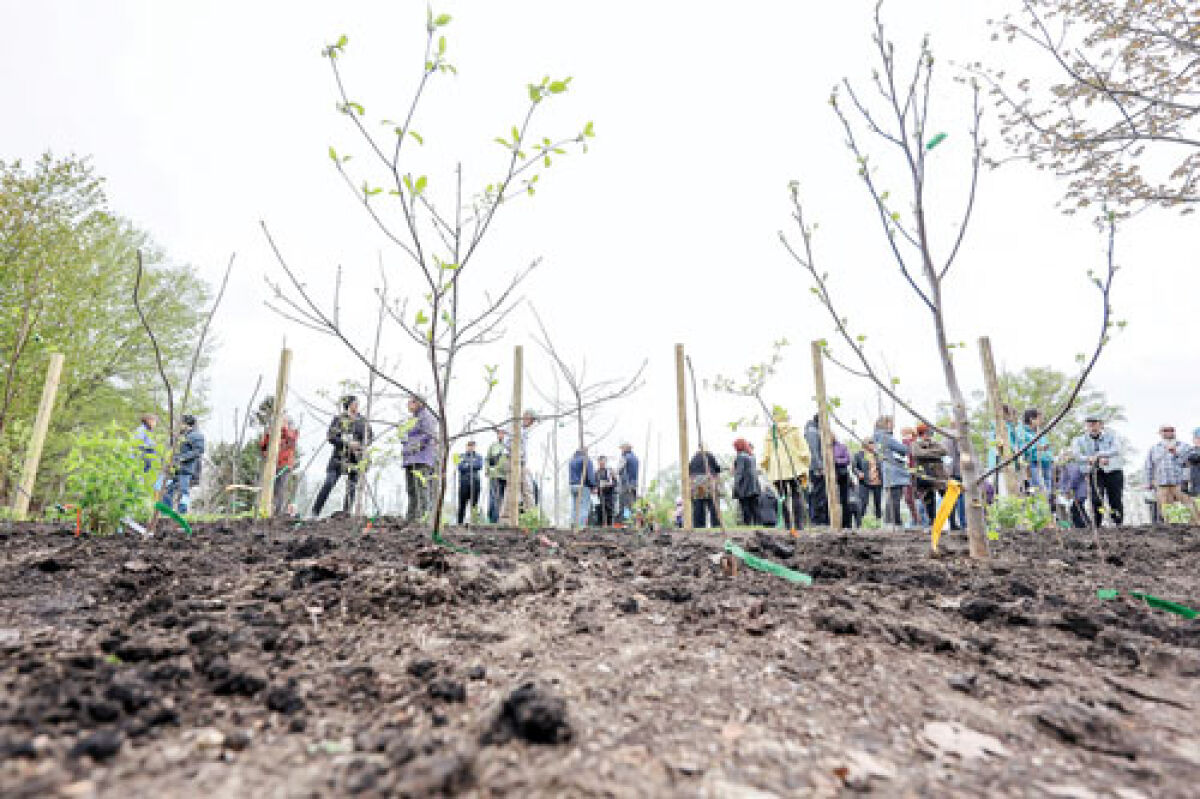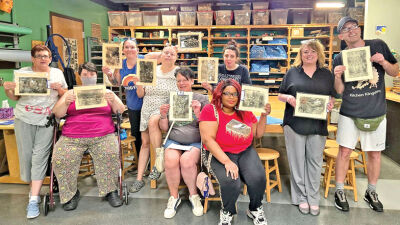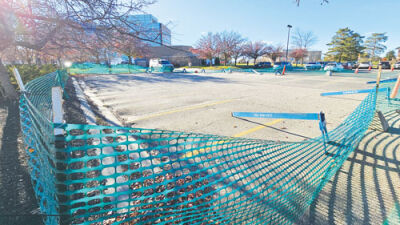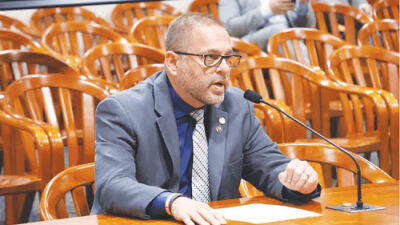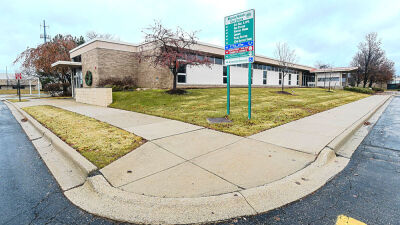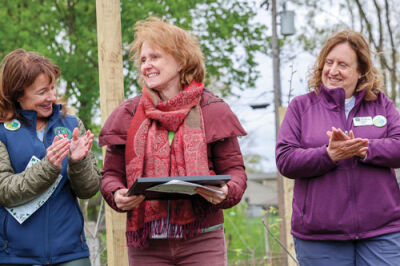
The Rochester Regional Chamber of Commerce gave an award to both Rochester Pollinators founder and city councilwoman Marilyn Trent and Mayor Nancy Salvia for their work on the mini-forest project May 3.
Photo by Patricia O’Blenes
ROCHESTER — The city of Rochester recently planted its very first mini-forest, just the second of its kind in southeastern Michigan, according to officials.
The concept of the mini-forest was first developed in the 1970s by Japanese botanist Akira Miyawaki, who created a method to restore native ecosystems by planting dense, fast-growing forests on small, degraded urban lands using only native trees and shrubs.
The Miyawaki Method has since been embraced worldwide, most recently in Rochester.
The idea to bring a mini-forest to the city was championed by Marilyn Trent, a current City Council member and the founder of the Rochester Pollinators, a group that focuses on saving and supporting pollinators and promoting the use of native plants.
Mini-forests, according to Trent, are dense and grow 10 times faster than a typical forest. They are rich with life and are designed to bring back the beauty and resilience of old-growth forest in just a few years. They capture carbon, cool the air, and provide habitat for local insects and pollinators, helping to heal the land and strengthen the ecosystem.
On May 3, volunteers, students, families and city leaders planted a dense mix of Michigan native canopy trees and shrubs in a 1,000-square-foot vacant lot near the city’s Department of Public Works and the community garden space, near Wilcox and Woodward.
The goal is to turn a once-ordinary grassy plot into a mini-forest, a thriving ecosystem.
“This is more than just a collection of trees. It’s a decisive step toward degraded and unused urban land,” Trent said. “It’s a restoration project to restore it. This was an old garbage dump, and beyond urban land restoration, it’s a community building experience that’s good for the environment as well.”
In a few years, Trent said, the city’s first mini-forest will mature into a self-sustaining biodiverse woodland.
“Without using chemicals and pesticides, in just two to three years this mini-forest will be self-sustaining — which, therein lies the magic,” she said.
Officials say the mini-forest will offer a range of lasting benefits, including capturing carbon through sequestration, cooling the environment and mitigating urban heat islands, providing habitat for birds, supporting up to 1,500 species of pollinators, improving soil health and water retention, and providing an educational experience for teachers, students and visitors.
“Planting may take a community, but this forest will stand for generations. It will grow, it will evolve, it will inspire, and it will become a living example of what’s possible when we come together to care for our shared environment,” Trent added.
Rochester Mayor Nancy Saliva said she thinks the city’s mini-forest is “incredible.”
“I think this is going to inspire so many other cities to do that same thing,” she said.
The project was a collaboration between the city’s DPW, the Parks Department, the City Beautiful Commission, the Rochester Tree Committee and the Rochester Pollinators. It was made possible via grants from the Community Foundation of Greater Rochester and First State Bank.
 Publication select ▼
Publication select ▼